The first place most B2B marketers look is LinkedIn. Although controversial, Facebook’s technology, user base, and data allow it to compete successfully in the B2B industry. 94% of B2B marketers believe LinkedIn to be the most trustworthy platform for sharing business-related content – but how and why?
Highlights:
- 80% of B2B leads originate from LinkedIn, compared to 7% on Facebook. 59% of B2B marketers claim that LinkedIn creates leads for their company, compared to more than twice that amount who claim that Facebook does the same.
- More than three times higher than Twitter (0.69%) and Facebook (0.77%), LinkedIn has the greatest visitor-to-lead conversion rate at 2.74%.
Enterprises have the opportunity to network and engage with prospects and other like-minded businesses using the Groups function on LinkedIn and Facebook. However, it is important to consider users’ intentions on various websites. There is a good possibility that people who interact with one another in LinkedIn Groups are doing so in some way related to their jobs.
On the contrary, individuals are more inclined to express their subjective opinions on Facebook groups on anything, from politics and hobbies to lifestyle and food. To choose the Groups to feature that is appropriate for you, consider the audience you intend to reach (Dwivedi et al., 2021). For instance, Facebook groups are probably the best place to advertise if you sell the newest food blender and want to reach consumers interested in cooking. LinkedIn Groups might be a better option if you offer a high-end service to top-tier management professionals.
As previously noted, business-minded people frequently visit LinkedIn. As a result, it is a fantastic platform for firms that cater to businesses. The reasons are as follows:
Identifying important decision-makers is simple (and reaching them in ads).
The platform has social selling integrated within it.
Since the platform was created expressly for networking, it is simpler.
In fact, according to eMarketer, LinkedIn accounts for 32% of all B2B display ad spending. However, we will cover advertisements further in this part. Brands seeking to approach consumers directly could find Facebook more effective. Additionally, you have access to ten times additional prospects and a fantastic location to increase engagement with your business. Therefore, LinkedIn wins when creating actual leads, even though Facebook has the advantage in terms of numbers.
Which Is Better for Business: B2B Marketing on Facebook or LinkedIn?
Facebook and LinkedIn are unquestionably the two most prominent social media platforms. You can accomplish this goal by running marketing efforts on both platforms. They have a user interface that is better and friendlier. Whatever business you work in, it is easier to manage, more effective, and practical to target new customers on Facebook or find a suitable audience on LinkedIn.
LinkedIn is still the best option for creating professional alliances and growing professional networks, but it now has more to contribute. It has undergone a revolution and offers a respectable number of characteristics and designs similar to those seen on social media websites for better marketing. You may start a private discussion, change your status, post a photo, publish a blog, share a LinkedIn video privately or publicly, and advertise your business or brand through public pages (EES, 2021; Agustin et al., 2021; Dwivedi et al., 2021).
Facebook’s features have also been improved, making it more practical and valuable for B2B marketing. The sharing button is the biggest selling factor because it enables you to interact with the audience, distribute your content to other businesses, contact other enterprises for updates, and more. You can interact with like-minded folks by creating groups.
Interestingly, with 2.7 billion users, Facebook is by far the largest social network in terms of pure size. According to LinkedIn, there are 706 million users. Is bigger always better, though? The statistics smooth out a little if you focus on consistently engaged users in the United States, as many advertisers do: LinkedIn has 170 million users compared to Facebook’s 223 million. When demographics are included, the gap between the two platforms widens even more. While only 28% of internet users between the ages of 18 and 29 have signed up for LinkedIn, Facebook has more than 90% of this demographic (Krings et al., 2021; Fraccastoro et al., 2021).
As per internal statistics, four of every five LinkedIn members are decision-makers at the organizations where they work. Additionally, compared to Twitter or Facebook users, LinkedIn users convert to leads at a rate roughly three times greater, according to some research. The expense of advertising on either platform reflects the gap in quantity and quality. On average, Facebook costs 64 cents per click, while LinkedIn charges an astonishing $3.49 per click.
What do these numbers tell us? The two platforms differ considerably from one another. The data only provides a partial picture. There might be more users on Facebook overall. The number of users interacting with B2B marketing content on LinkedIn may be more significant. However, no industry has a flawless statistical average. Each marketer must choose the best combination to reach the appropriate social media consumers with their message and convert them to leads (Arrach & Varchi Tegelöf, 2022).
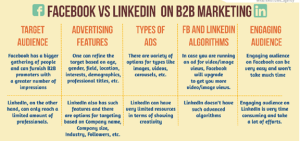
For B2B Marketing, Be Aware of Your Target Market
Therefore, where should you invest your marketing budget? There is a simple solution: wherever you receive the highest rate of return on your investment or the best ROAS in advertising (Return on Ad Spend)—precisely determining where and when is the problematic part. To do this, you need a precise, data-driven understanding of “who”—the individual most likely to sign a contract with your company. It is uncommon to need to appeal to just one of these people in a B2B setting (Kumar & Sharma, 2022).
The buyer groups inside the organizations in the industry you are targeting must be mapped out to determine where you should be and with what messaging. Following that, you may create buyer personas that correspond to each buyer category. This is when you will start to identify which platforms and channels have the best possibility of converting these personas based on your product and the intricacy of your sales process. Additionally, you will start to comprehend the kinds of articles that might appeal to each.
You are likely to learn that the decision-makers you are looking for utilize both platforms at various times and for multiple purposes. Uncertain of which to use or when? Here are some things to think about.
How to Use Facebook for B2B Marketing and When to Do So
Advertising:
Being the trendy underground product that nobody has yet heard of might sometimes be advantageous, but only temporarily. With its significantly lower CPM, Facebook offers you a broader scope for your money if you wish to make a prominent reputation for yourself. This is top-of-the-funnel material, but occasionally a lead needs to get to know you before they are ready to hear a more targeted presentation. Additionally, Facebook is by far the most developed ad network. Facebook provides its marketers with significantly more advanced advertising capabilities than LinkedIn does. Based on its highly sophisticated machine learning algorithms, user data, and site tracking and analytics, Facebook also provides superior conversion optimization. In conclusion, use Facebook to strike it rich in the long run if you have the following: tests’ duration and cost; a big target market (Kumar & Sharma, 2022; Fraccastoro et al., 2021).
Focusing on small and local enterprises:
Local companies long ago realized the value of Facebook. The best internet channel for connecting with customers, according to many, is still this one. That implies that the proprietors of the companies, as mentioned earlier, regularly examine their feed. This makes them easy targets for B2B marketers with valuable information to impart. You will likely reach more wedding photographers on Facebook than on LinkedIn if you offer them professional equipment. On the other hand, if your product is a software solution for businesses, you might have more success interacting with prospects and decision-makers on LinkedIn (Katz, 2020; Fraccastoro et al., 2021).
Retargeting:
Facebook Pixel is an analytics tool you install on a business website to track the effectiveness of your Facebook Ads, which Facebook provides to its advertisers. More crucially, it enables you to retarget leads with adverts on other networks and monitor them across several devices. Additionally, LinkedIn has its own Insights Tag. You can use it for retargeting, but Facebook is a far better option since, on average, LinkedIn is more expensive, and you do not typically benefit from LinkedIn’s targeting benefits when utilizing retargeting (Dwivedi et al., 2021). By the way, you should still install the Insights Tag on your website to gain LinkedIn insights on your website traffic, even if you do not use it for retargeting.
Considered leadership:
A fantastic way to find readers for insightful writing and comments on your industry and related topics is on Facebook Groups and Communities. Since Facebook postings frequently get reposted socially, they might be more appropriate there than posts that go in-depth on certain technical or insider topics. Facebook Groups are fantastic for generating leads and can serve as a perfect workaround for Facebook’s lack of B2B targeting in its ad platform. Admittedly, LinkedIn tends to provide less engagement for unestablished firms (Katz, 2020; Krings et al., 2021; Cartwright et al., 2021).
How to Use LinkedIn for B2B Marketing and When to Do So
Ad formats that are innovative and lead generation forms:
For B2B marketers, LinkedIn’s distinctive ad features might be advantageous. You may design advertising with a call-to-action button that, when clicked, automatically fills out a form using the lead’s LinkedIn profile information using LinkedIn Lead Generation Forms. It is quick, painless, and effective. 90% of marketers who use LinkedIn’s Lead Gen Forms claim that doing so has decreased their cost per lead (Arrach & Varchi Tegelöf, 2022).
Worker advocacy:
It can be a highly effective method to break through the regular ad noise when your staff can speak sincerely and interestingly on your company’s behalf on social media. Employee advocacy has a significant impact on B2B marketing. The latest whitepaper from your company may not pique the interest of your employees’ Facebook friends, but their LinkedIn followers definitely could (Fraccastoro et al., 2021).
Professional leadership:
LinkedIn is business-oriented, and its users logging in are not seeking cat and meme videos. They are eager to discuss business. You can find a receptive audience on LinkedIn for more in-depth, technical articles regarding business-related issues. Your promotional content will have credibility if you develop your brand’s reputation and your subject-matter authority in this way. Building a vibrant community around your B2B business through thought leadership on Linkedin has a more significant overall potential than doing the same on Facebook (Katz, 2020).
The brand Sniping:
Unlike Facebook, LinkedIn enables you to target particular job roles in specific companies in particular places. This implies that on LinkedIn, you can zoom in on important people with sniper-like efficiency regarding sponsored promotion. In contrast, on Facebook, you have to throw a wider net and hope it catches the correct customers. Despite the widespread belief that Facebook is for B2C and LinkedIn is for B2B, this is rarely the case for any given organization. Ad formats or lead conversion numbers should not be used to calculate the percentage each platform should take in your digital marketing budget. Your target audience, buyer persona, and where they are in your buying cycle matter most (Cortez & Dastidar, 2022).
In conclusion, both platforms in the Facebook vs. LinkedIn marketing argument are user-centric and revolve around their users’ requirements. Both have numerous effective and robust Ad setting tools. LinkedIn is a better option if you want to connect with a specific set of individuals from a particular industry, geography, or role because it appears like the information on LinkedIn is more recent. It enables you to use LinkedIn prospecting to obtain more targeted and accurate hits (EES, 2021; Fraccastoro et al., 2021).
Let us say that you are mainly concerned with reaching the appropriate audience with your message. In that situation, you must be aware that both can help you target people based on factors like job title and preferences, income, geography, gender, age, and the most popular or least popular content, among others. Facebook, though, can provide you with a bit of an advantage by enabling you to look further on Facebook. How? Your marketing initiatives can be targeted or retargeted using Facebook depending on the user’s behavior, personal and social life, and other personalized information (EES, 2021).
It is safe to claim that LinkedIn as your top priority for content marketing is a wise choice after years of study and experience. Employee advocacy on LinkedIn can beautifully amplify your messages. Nevertheless, both offer excellent audience analytics tools designed to work with B2B marketing. Do you understand what marketing’s most crucial component is? Budget! You must select an appropriate platform if you want the cost of your social media marketing initiatives to be covered by profits. If you prefer Facebook, you usually get better value for your money. Due to the simultaneous engagement of millions of users on Facebook, there are more opportunities to be seen and clicked. In addition, Facebook users spend more money than LinkedIn users (EES, 2021; Arrach & Varchi Tegelöf, 2022).
Works Cited
Agustin, I., Astari, M. M. T., & Rosmawati, E. (2021). Social media utilization in b2b marketing communications in palm oil plantation research services. Nusantara: Jurnal Ilmu Pengetahuan Sosial, 8(6), 1791-1803.
Arrach, S., & Varchi Tegelöf, O. (2022). The benefits and challenges in the B2B sales process derived from digitalization: And the augmentation of the hybrid work model.
Cartwright, S., Liu, H., & Raddats, C. (2021). Strategic use of social media within business-to-business (B2B) marketing: A systematic literature review. Industrial Marketing Management, 97, 35-58.
Cortez, R. M., & Dastidar, A. G. (2022). A longitudinal study of B2B customer engagement in LinkedIn: The role of brand personality. Journal of Business Research, 145, 92-105.
Dwivedi, Y. K., Ismagilova, E., Rana, N. P., & Raman, R. (2021). Social media adoption, usage and impact in business-to-business (B2B) context: A state-of-the-art literature review. Information Systems Frontiers, 1-23.
EES, (2021). Facebook vs. LinkedIn: Which is best for B2B marketing? ENTERPRISE ENGINEERING SOLUTIONS (EES). Retrieved from: https://www.eescorporation.com/facebook-vs-linkedin-for-b2b-marketing/ Accessed on: 07-09-2022.
Fraccastoro, S., Gabrielsson, M., & Pullins, E. B. (2021). The integrated use of social media, digital, and traditional communication tools in the B2B sales process of international SMEs. International Business Review, 30(4), 101776.
Katz, E. (2020). LinkedIn vs. Facebook: Which Will be Better for B2B in 2021? Oktopost. Retrieved from: https://www.oktopost.com/blog/linkedin-vs-facebook/ Accessed on: 08-09-2022.
Krings, W., Palmer, R., & Inversini, A. (2021). Industrial marketing management digital media optimization for B2B marketing. Industrial Marketing Management, 93, 174-186.
Kumar, B., & Sharma, A. (2022). Examining the research on social media in business-to-business marketing with a focus on sales and the selling process. Industrial Marketing Management, 102, 122-140.


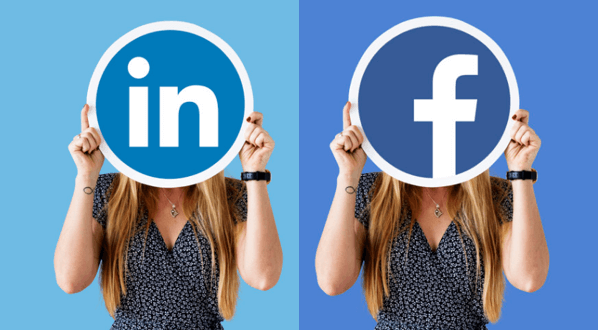
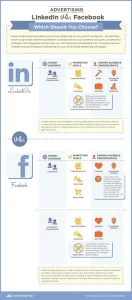

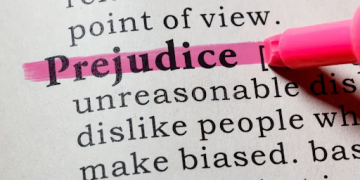

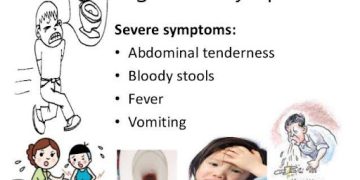




Discussion about this post